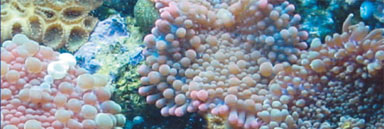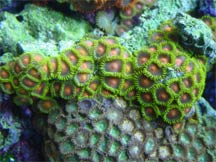Aquarium Lighting: Spectrum and Intensity - Part 1
Several factors including water depth, water clarity, weather, and air clarity affect the color and intensity of light in natural aquatic environments. These factors, combined with varied overall water conditions between individual aquatic habitats, cause light spectrum and intensity to differ from one aquatic environment to another. Understanding how aquarium lighting duplicates natural underwater lighting conditions requires an understanding of how these conditions are measured.
Light Spectrum - Measured with the Kelvin Scale At 0 degrees Kelvin (equivalent to -273° Celsius), the theoretical blackbody emits no light. As the blackbody warms, it begins emitting red light. As the blackbody continues to increase in temperature, light wavelengths become more yellow, then green, blue, and finally violet. A candle flame on the Kelvin scale has a rating of 1800° K. Sunlight at noon, with a Kelvin rating of 5500° K, is typically referred to as full spectrum because it contains a blend of all colors throughout the spectrum. Reddish light has a lower K rating and color temperature, while bluer light has a higher K rating and a higher color temperature. In nature, as light enters and passes through the first 15 feet of water, the red and orange wavelengths are absorbed by the water, increasing the light's K rating, and giving the light a bluer appearance. As the light penetrates to 30 feet, the water absorbs the yellow spectrum. And as the light continues past 50 feet, the water filters the green wavelengths, leaving just the blue and violet wavelengths. This results in light with the highest Kelvin rating.
Light Intensity - Measured in Lux and Watts
Lux Water clarity determines the speed at which light degrades in different aquatic environments. For example, the level of intensity on a reef with clear water will average about 20,000 lux at a depth of 15 feet, and 10,000 lux at 30 feet. Knowing where an organism lives in nature will give you a good idea of the light intensity required to maintain that organism in your aquarium. Lux meters are relatively inexpensive, and can be used to check your lighting for required intensities, as well as to determine when bulbs in your lighting system need replacing.
Watts A watt is actually related to a lux. One lux is equal to 1.46 milliwatts (0.00146 watts) of energy of one specific frequency (555 nm) hitting a surface area of one square meter. However, since bulbs used in aquarium lighting systems emit light of many frequencies (not just 555 nm), no exact formula can be used when determining the number of lux produced by a bulb of a specific wattage. Part two of this article discusses duplicating the natural light spectrum and intensity for fish-only aquariums, freshwater planted aquariums, and saltwater reef aquariums. |
||
|
|





